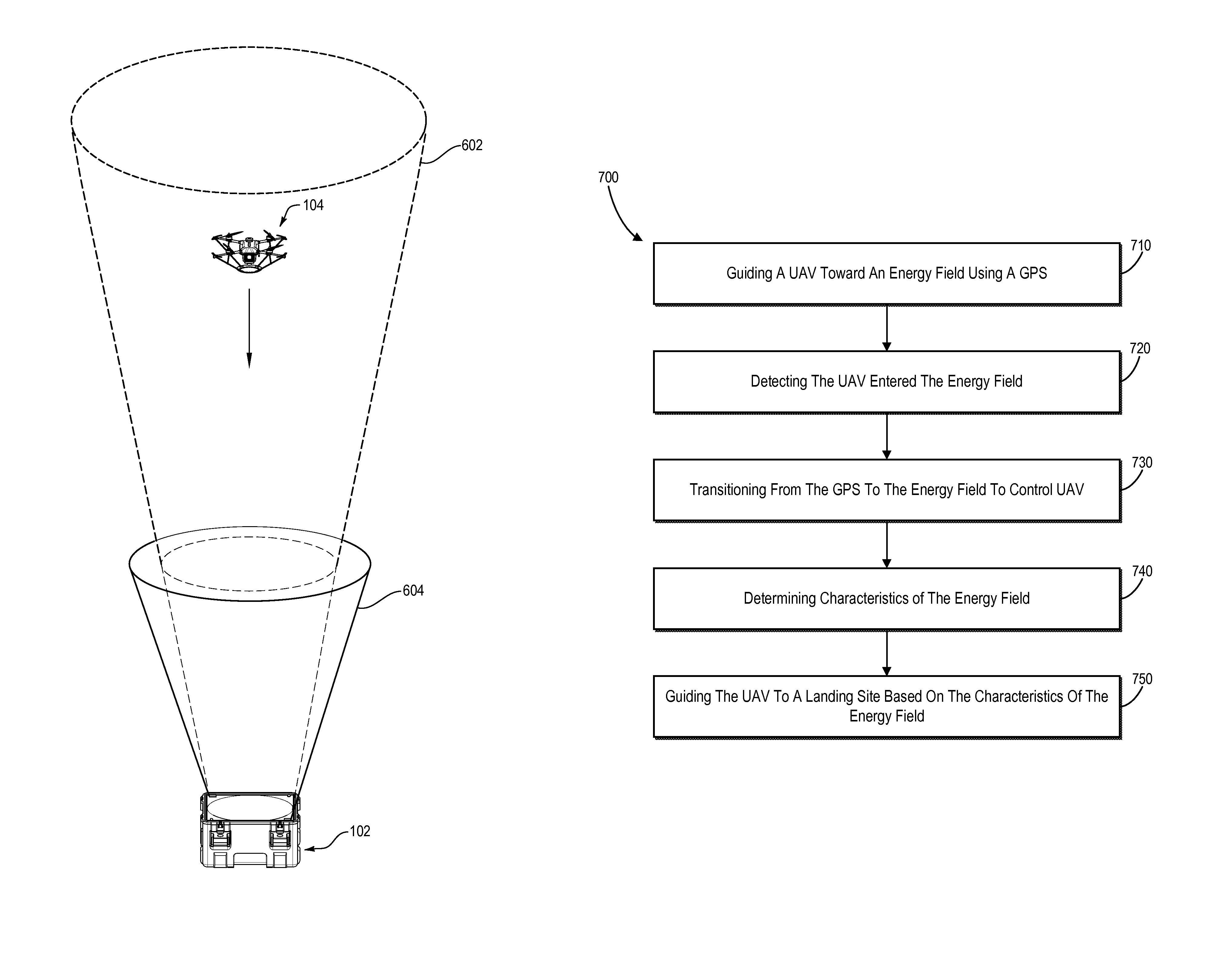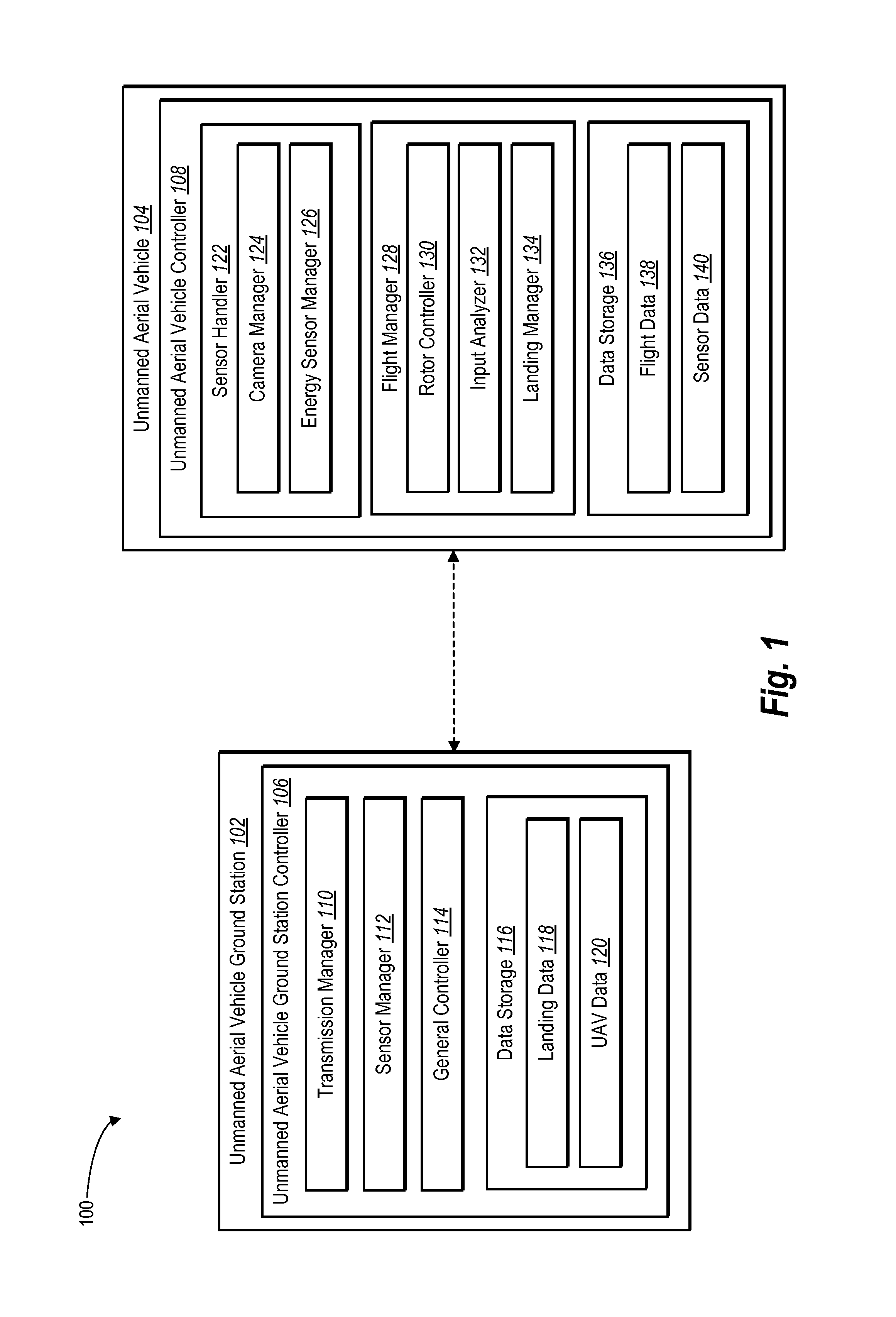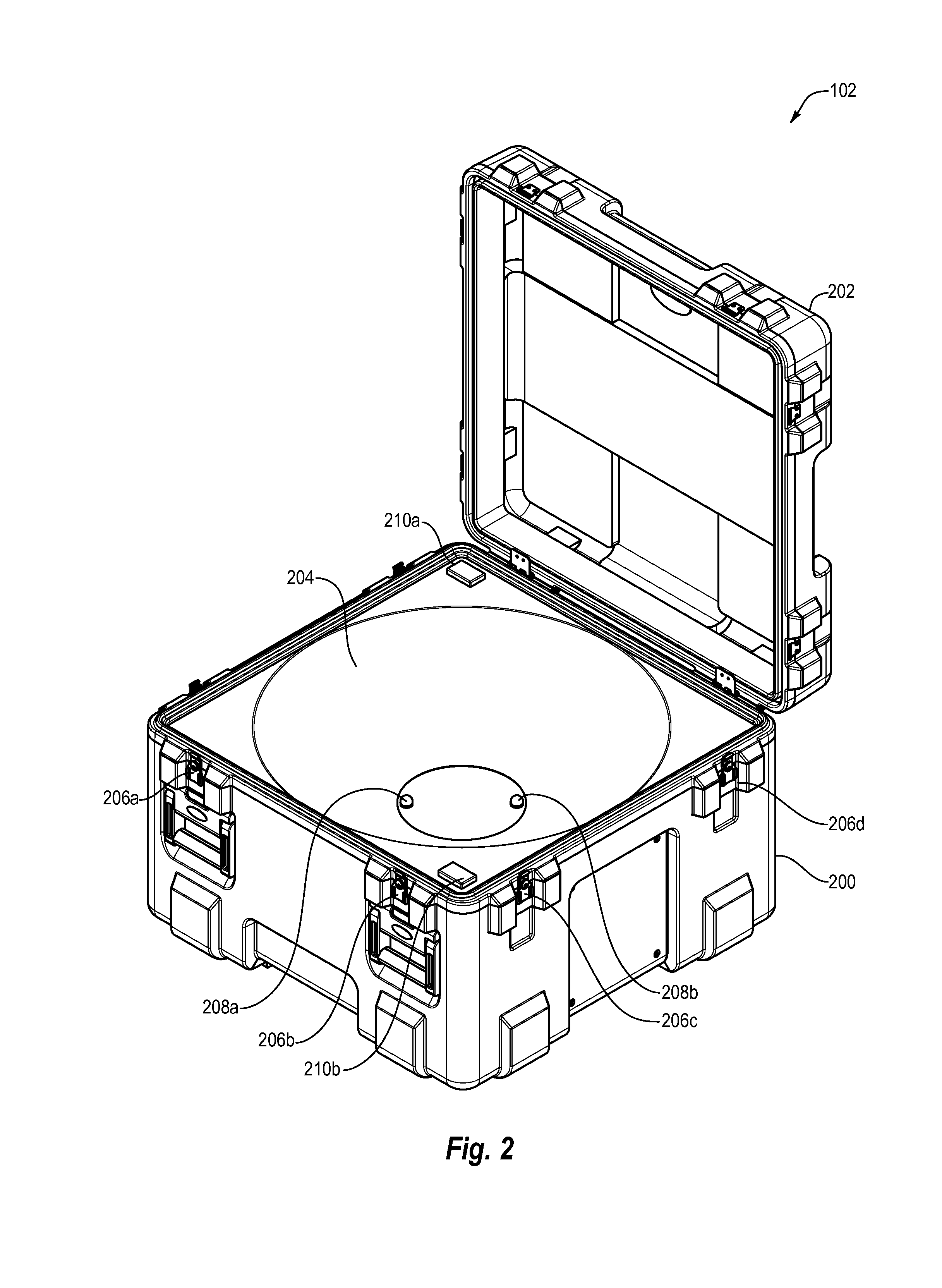Autonomously landing an unmanned aerial vehicle
an unmanned aerial vehicle and autonomous technology, applied in vehicle position/course/altitude control, process and machine control, instruments, etc., can solve the problems of high cost of both options, no cost-effective process to obtain real-time or near, and no option to provide real-time or near cost-effective process
- Summary
- Abstract
- Description
- Claims
- Application Information
AI Technical Summary
Benefits of technology
Problems solved by technology
Method used
Image
Examples
Embodiment Construction
[0024]One or more embodiments described herein include an autonomous landing system. For example, the autonomous landing system described herein manages an autonomous landing of an unmanned aerial vehicle (“UAV”) in connection with a UAV ground station (“UAVGS”). The autonomous landing system described herein includes components that enable a UAV to autonomously land on a UAVGS regardless of the initial altitude of the UAV or the position of the UAVGS.
[0025]In one or more embodiments, the autonomous landing system described herein includes components that facilitate the autonomous landing of the UAV on the UAVGS by providing various guidance systems. For example, in one embodiment, the autonomous landing system can include energy transmitters on the UAVGS that produce an energy field that may be perceived by the UAV. For instance, in one or more embodiments, the energy transmitters can include light sources that produce light signals to form an energy field. The autonomous landing s...
PUM
 Login to View More
Login to View More Abstract
Description
Claims
Application Information
 Login to View More
Login to View More - R&D
- Intellectual Property
- Life Sciences
- Materials
- Tech Scout
- Unparalleled Data Quality
- Higher Quality Content
- 60% Fewer Hallucinations
Browse by: Latest US Patents, China's latest patents, Technical Efficacy Thesaurus, Application Domain, Technology Topic, Popular Technical Reports.
© 2025 PatSnap. All rights reserved.Legal|Privacy policy|Modern Slavery Act Transparency Statement|Sitemap|About US| Contact US: help@patsnap.com



